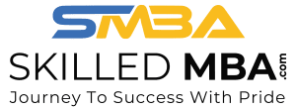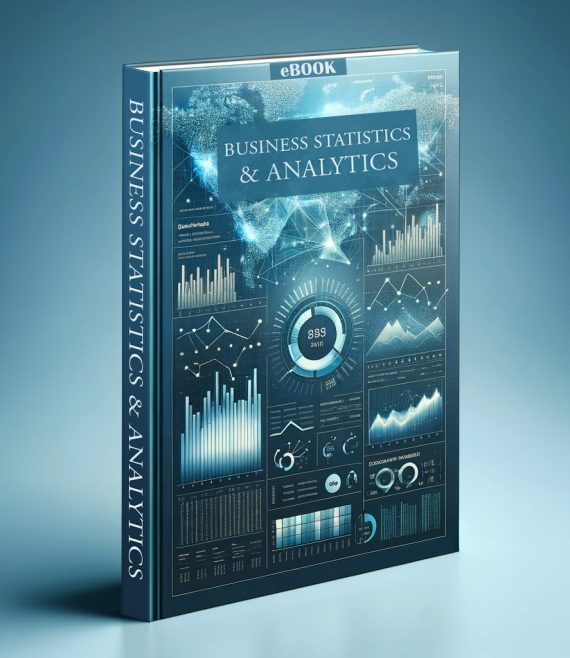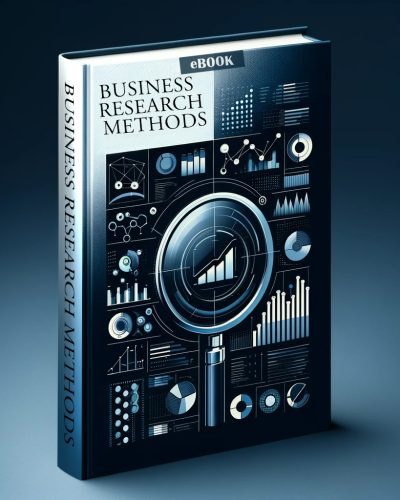Business Statistics & Analytics
₹210.00₹300.00
Unit I: Descriptive Statistics
Meaning, Scope, types, functions, and limitations of statistics, Measures of Central tendency – Mean,
Median, Mode, Quartiles, Measures of Dispersion – Range, Inter quartile range, Mean deviation, Standard
deviation, Variance, Coefficient of Variation, Skewness, and Kurtosis.
Unit II: Time Series & Index Number
Time series analysis: Concept, Additive and Multiplicative models, Components of time series,
Trend analysis: Least Square method – Linear and Non-Linear equations, Applications in business
decision-making.
Index Numbers:- Meaning, Types of index numbers, uses of index numbers, Construction of Price,
Quantity and Volume indices:- Fixed base and Chain base methods.
Unit III: Correlation & Regression Analysis
Correlation Analysis: Rank Method & Karl Pearson’s Coefficient of Correlation and Properties of
Correlation.
Regression Analysis: Fitting of a Regression Line and Interpretation of Results, Properties of Regression
Coefficients and Relationship between Regression and Correlation.
Unit IV: Probability Theory & Distribution
Probability: Theory of Probability, Addition and Multiplication Law, Baye’s Theorem
Probability Theoretical Distributions: Concept and application of Binomial; Poisson and Normal
distributions.
Unit V: Hypothesis Testing& Business Analytics
Hypothesis Testing: Null and Alternative Hypotheses; Type I and Type II errors; Testing of Hypothesis:
Large Sample Tests, Small Sample test, (t, F, Z Test, and Chi-Square Test)
Concept of Business Analytics- Meaning types and application of Business Analytics, Use of Spread Sheet
to analyze data-Descriptive analytics and Predictive analytics.
Description
Unit I: Descriptive Statistics
Meaning, Scope, types, functions, and limitations of statistics, Measures of Central tendency – Mean,
Median, Mode, Quartiles, Measures of Dispersion – Range, Inter quartile range, Mean deviation, Standard
deviation, Variance, Coefficient of Variation, Skewness, and Kurtosis.
Unit II: Time Series & Index Number
Time series analysis: Concept, Additive and Multiplicative models, Components of time series,
Trend analysis: Least Square method – Linear and Non-Linear equations, Applications in business
decision-making.
Index Numbers:- Meaning, Types of index numbers, uses of index numbers, Construction of Price,
Quantity and Volume indices:- Fixed base and Chain base methods.
Unit III: Correlation & Regression Analysis
Correlation Analysis: Rank Method & Karl Pearson’s Coefficient of Correlation and Properties of
Correlation.
Regression Analysis: Fitting of a Regression Line and Interpretation of Results, Properties of Regression
Coefficients and Relationship between Regression and Correlation.
Unit IV: Probability Theory & Distribution
Probability: Theory of Probability, Addition and Multiplication Law, Baye’s Theorem
Probability Theoretical Distributions: Concept and application of Binomial; Poisson and Normal
distributions.
Unit V: Hypothesis Testing& Business Analytics
Hypothesis Testing: Null and Alternative Hypotheses; Type I and Type II errors; Testing of Hypothesis:
Large Sample Tests, Small Sample test, (t, F, Z Test, and Chi-Square Test)
Concept of Business Analytics- Meaning types and application of Business Analytics, Use of Spread Sheet
to analyze data-Descriptive analytics and Predictive analytics.








